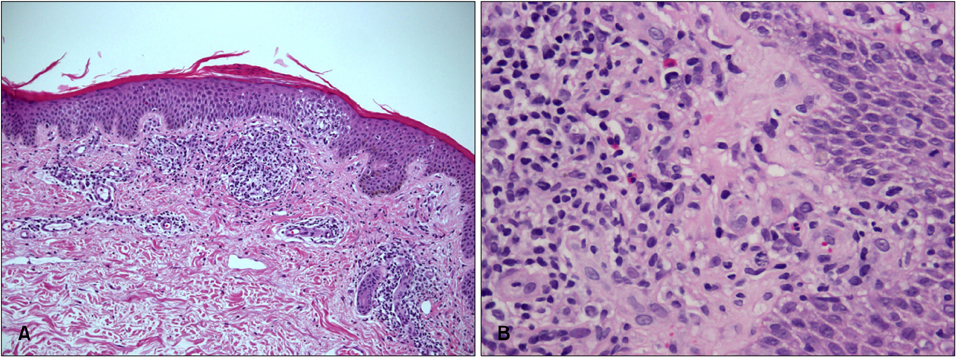Ann Dermatol.
2013 May;25(2):271-272. 10.5021/ad.2013.25.2.271.
Epoprostenol: Flushing or Erythroderma?
- Affiliations
-
- 1Department of Dermatology, University General Hospital of Albacete, Faculty of Medicine, University of Castilla-La Mancha, Albacete, Spain. mlmartinezm@sescam.jccm.es
- 2Department of Pneumology, University General Hospital of Albacete, Faculty of Medicine, University of Castilla-La Mancha, Albacete, Spain.
- 3Department of Pathology, University General Hospital of Albacete, Faculty of Medicine, University of Castilla-La Mancha, Albacete, Spain.
- 4Department of Cardiology, University General Hospital of Albacete, Faculty of Medicine, University of Castilla-La Mancha, Albacete, Spain.
- KMID: 2171811
- DOI: http://doi.org/10.5021/ad.2013.25.2.271
Abstract
- No abstract available.
MeSH Terms
Figure
Reference
-
1. Barst RJ, Rubin LJ, Long WA, McGoon MD, Rich S, Badesch DB, et al. Primary Pulmonary Hypertension Study Group. A comparison of continuous intravenous epoprostenol (prostacyclin) with conventional therapy for primary pulmonary hypertension. N Engl J Med. 1996. 334:296–301.
Article2. Badesch DB, Tapson VF, McGoon MD, Brundage BH, Rubin LJ, Wigley FM, et al. Continuous intravenous epoprostenol for pulmonary hypertension due to the scleroderma spectrum of disease. A randomized, controlled trial. Ann Intern Med. 2000. 132:425–434.
Article3. McLaughlin VV, Shillington A, Rich S. Survival in primary pulmonary hypertension: the impact of epoprostenol therapy. Circulation. 2002. 106:1477–1482.4. Myers SA, Ahearn GS, Angelica Selim M, Tapson VF. Cutaneous findings in patients with pulmonary arterial hypertension receiving long-term epoprostenol therapy. J Am Acad Dermatol. 2004. 51:98–102.
Article5. Ahearn GS, Selim MA, Tapson VF. Severe erythroderma as a complication of continuous epoprostenol therapy. Chest. 2002. 122:378–380.
Article



